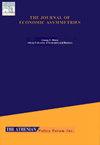On the link between U.S. national debt and income distribution: Asymmetric evidence from state level data
Q1 Economics, Econometrics and Finance
引用次数: 0
Abstract
The limited number of studies that have assessed the impact of debt on income inequality have used data at the aggregate country level. In this paper, when we use aggregate data from the U.S., we do not find much of a significant effect. However, when we use data from each of the states in the U.S., we find short-run (but not long-run) effects. By then assuming that the effects of debt on GINI (inequality measure) could be asymmetric, we employ a nonlinear ARDL modeling approach and find that in the long run, reducing national debt in the U.S. could reduce income inequality in most states.
论美国国债与收入分配之间的关系:来自州一级数据的不对称证据
数量有限的评估债务对收入不平等影响的研究使用的是国家合计一级的数据。在本文中,当我们使用来自美国的汇总数据时,我们没有发现太大的显著影响。然而,当我们使用来自美国每个州的数据时,我们发现了短期(而不是长期)的影响。然后假设债务对GINI(不平等衡量)的影响可能是不对称的,我们采用非线性ARDL建模方法,发现从长远来看,减少美国的国债可以减少大多数州的收入不平等。
本文章由计算机程序翻译,如有差异,请以英文原文为准。
求助全文
约1分钟内获得全文
求助全文
来源期刊

Journal of Economic Asymmetries
Economics, Econometrics and Finance-Economics, Econometrics and Finance (all)
CiteScore
4.80
自引率
0.00%
发文量
42
审稿时长
50 days
 求助内容:
求助内容: 应助结果提醒方式:
应助结果提醒方式:


